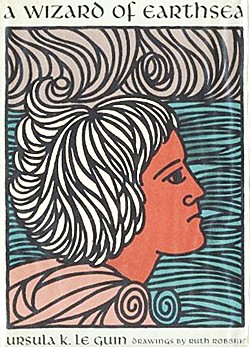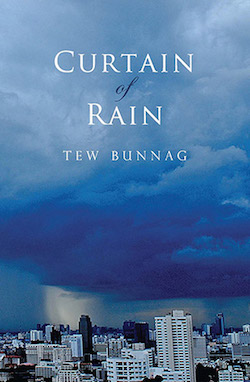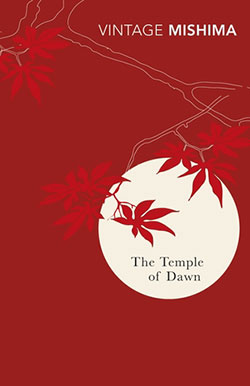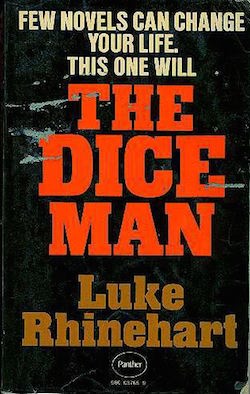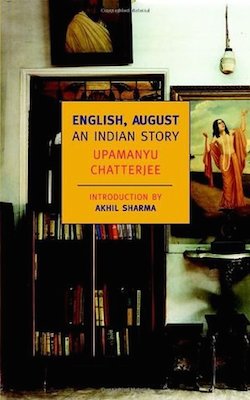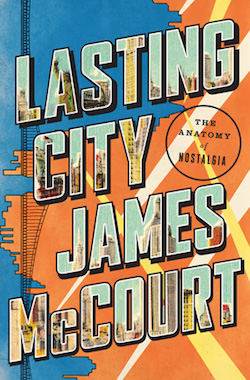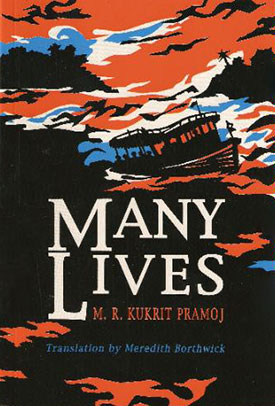(From January 2010; recovered from https://web.archive.org/web/20100616080055/http://hotelstgeorgepress.com/2010/01/the-legend-of-the-10-elemental-masters, which I’d entirely forgotten about. The content has not been edited, which might be a mistake.)
 Nick Smith (aka “ulillillia”)
Nick Smith (aka “ulillillia”)
The Legend of the 10 Elemental Masters
(Lulu, 2009)
Nick Smith became well-known on the Internet a few years ago for his labyrinthine website which describes, in excruciating detail, video games that he would like to construct. Smith’s games are largely concerned with physics: characters can jump this many thousand feet at a time, their speed is some extremely large number. Animated GIFs detail his creation; he also has a number of YouTube videos. But his is a beguiling voice: both for its utterly self-deprecating quality (he openly despairs of his programming ability), and because of its rarity. We don’t hear people like this very often: his website has given Smith a voice, and that’s fascinating. Last year, he published his first book, using Lulu. It’s worth looking at as an example of the sort of writing the Internet makes possible. It doesn’t take much poking around to come to the conclusion that Smith is somewhere on the autism spectrum. To you and me, the idea of jumping 10,000 feet in the air is not very different from the idea of jumping 12,000 feet in the air. Nick Smith sees things differently.
The reviews on Lulu give a sense of the perils of dealing with this kind of work: the web has a deeply ingrained culture of making fun of people, back to the Star Wars kid and the man who was Peter Pan. There’s a certain unease as well that comes with dealing with outsider art: it’s hard to go to the American Visionary Art Museum in Baltimore and not feel a bit odd at the conjunction of art made by crazy people and what is clearly a thriving marketplace where profit is being made off their creations. Many of the artists whose work is presented there clearly had unhappy lives and made very little off their works. A similar feeling comes from visiting the Mutter Museum of medical curiosities in Philadelphia: there’s little documentation on view of the lives of the people whose remain feature prominently, leading the visitor to wonder what the life of a woman with an immense horn growing out of her head (to take a comparatively tame example) could have been like. I’m reminded as well of going to see a Wesley Willis show a few years before his death, and feeling a little queasy about the crowd of Boston punks and frat boys vociferously enjoying his show. Though it was clear that Mr. Willis enjoyed what he was doing, seemed to be making a living off of it, and was being taken care of by his opening band, he was also a man who had a prominent indentation in his forehead from head-butting the audience: and it was clear that the audience thought this was hilarious. The line between “laughing with” and “laughing at” was distinctly blurry.
Nick Smith is getting paid here: since he’s using Lulu, he’s probably getting around ten dollars every time someone buys a book, so I don’t feel bad pointing out his work. While The Legend of the 10 Elemental Masters is fiction, it’s clear that the author is deeply invested in it. There is the temptation to psychologize from the work; not being a psychologist, I don’t want to focus on the author. Rather, the work is what’s important here. In most of the usual senses, this is not a good novel. It’s worth looking at, however, first because of the strangeness it evokes; and second, because of what it can show us about how fiction works.
* * * * *
We start in medias res high above North Dakota:
Knuckles glides north 1500 feet about Lake Sakakawea at 800 mph following Highway 83. A small thunderstorm is somewhat visible to the south. The sky is 3/8 scattered with cirrus clouds and 1/8 scattered with altostratus clouds. The wind is 15 mph with gusts to 20 mph. A few small patches of snow in ditches, some with water, are visible but hard to see due to the speed. A 40-second pause in speech occurs while credits display on screen.
This is narrative as video game: in the next paragraph, we learn that Knuckles’s fur is “dark-violet-colored (FFA000E0)”; Appendix 5 explains his color system for those unfamiliar with hexadecimal values. I’m not, I should confess right now, a gamer, and as such I can’t really read this book as I suspect it’s intended to be read, a walkthrough of a non-existent game. Rather, I’m reading it as a novel, which, at least on some level it is: the adventures of the aforementioned Knuckles and his three human friends as they battle an evil force who turns out to be named Seth King.
As in all fiction, Smith creates a world and deploys his characters across it. As the first paragraph suggests, this is a massively positivistic universe: everything can be known, and declared. Numerical values are given for everything: the speeds at which characters run or glide; the area covered by flames when Knuckles is attacked by Seth King; the exact amount of time before things will happen; how many different types of soda are in a vending machine; what color everything is. And further: as in a role-playing game, characters can cast spells; they have a wealth of statistics and points of various sorts, and when they fight, damages are calculated by algorithms. This is, then, a very designed world.
While I’m not a gamer, I have, however, spent a lot of time with programmers. One thing about programmers that might be surprising: a lot of them are deeply fascinated with Disney Land. This makes sense when you realize that Disney Land is a deeply designed environment: every detail is there for a reason, and the cognoscenti who know how Disney Land works can stand in unmarked spots to see secret vistas that the common visitor has no idea about. There’s an affinity with the world that Nick Smith has laid out; however, this book isn’t necessarily designed to appeal to a general audience.
This is a world that works like a video game. This is actually extremely strange. Consider this early scene, one of the first bits of action in the book, where Knuckles stops a crime:
Three seconds later, a six-foot-tall, male jail escapee in an orange jump suit comes into view. He runs to the Oldsmobile where a military officer is just starting the car. The escapee arrives and attempts to hijack the car by opening the driver’s door. Knuckles casts “glue4″ on him, a spell with no effects, of which prevents the escapee from changing his position. A gray “4 immobilized” pops out bouncing like a ball three times.
On a computer screen, this would not cause one to think twice; this is how video games work. But when one imagines this happening in the world of fiction, we’re in a different place entirely: this is something strange and new. This is explained further:
These popups very closely resemble that of the Tahoma font at font size 160 in bold face, but 90% as wide extended a half inch back. Gray popups indicate the addition or intensification of a status effect. Appendix 4 explains more about these popups and their meaning and behavior. “Glue” is the name of the spell series, and the “4″ is the spell level. “Glue4″ is the spell name. The spell system is explained in appendix 3.
This explanation goes on; there’s also a diagram showing how characters look when they cast spells which I don’t entirely understand. Knuckles then casts a teleport spell on the escapee to teleport him back into jail. Pop-ups appear above the characters frequently. Knuckles, as the story begins, is the only character who can cast spells and behave in this way; those who see this are impressed, but don’t appear to realize that the rational universe they were used to has disappeared entirely. Knuckles also has a video projection spell: when necessary for exposition, he can create a screen in the air and show something that’s already happened for demonstration purposes. Knuckles is from another planet, but public spirited; he frequently appears on CNN to warn the populace of impending disasters, although he gets paid for “police work and peace negotiations”.
There’s not a lot of narrative tension in this book: Knuckles, being a superhero, can do just about anything. The humans that he brings along – first Ivan and Tu, from North Dakota, then Tyler, who is found inside a “military factory – don’t seem to have much of a function except to watch Knuckles’s astonishing feats and applaud (or, as often, fail to react). In the middle of the book Ivan and Steve wander off to play volleyball when Knuckles is slaying monsters. Ivan does manage to suggest a useful idea once, but one wonders if Knuckles is just humoring him. For the final battle with Seth King, Knuckles summons his friend Speed who is even more powerful than Knuckles. As most of the book to that point has been Knuckles demonstrating that he has no real competitors, the ending is something of a foregone conclusion. An interchange between Knuckles and the evil force halfway through the book illustrates the position of the reader:
Evil force
(one second pause) Wanna play a game?
Knuckles
It’s a near-certainty that I’ll win, but, whatever.
And yet, the reader is kept engaged wondering about the logic that constructs it. One of the first dramatic scenes happens aboard an airplane from North Dakota to Puerto Rico, where Knuckles senses that something will happen; Knuckles takes Ivan and Tu to the airport, where he buys them tickets with money pulled from his chest, in which he can store anything. (He is, he explains, a multi-millionare in every country because he can duplicate and sell objects – not currency, as that would be illegal; also, he charges the government for his security services.) The flight is disrupted by evil forces; Knuckles, of course, sets everything to right. After this flight, however, Knuckles simply teleports himself and his acolytes all over the world. Or again: during a scene during a school party, Knuckles rigs the lottery so that Ivan and Tu both win the prizes they want most, coupons for free pizzas at Pizza Hut. Much later in the book, during a break in the action, the characters decide they would like some pizza, so they go to Pizza Hut. There, Knuckles makes them pay for their pizza with their coupons; magnanimously, he offers to pay for the drinks, as well as rescuing one of the waiters from cardiac arrest brought on by the evil forces that follow him about. It’s hard to understand Knuckles. One is reminded of the vindictive behavior of the child Jesus in the apocryphal infancy gospels.
On another level, there’s a similarity to the familiar high school narrative: the dream of someone coming and taking you away from your mundane surroundings. Knuckles summons Ivan and Tu from high school (in Ivan’s case, by way of a “small three-by-thre-inch bright pink colored (FFFFB0D)) post-it note stating, ‘See me outside as you leave, Knuckles’ in font size 36 Courier New”) for no appreciable reason. There’s an end-of-the-year party at school; Knuckles offers to take Ivan in a scene that’s weirdly sad:
Ivan
(running) Knuckles! What are you doing here?
Knuckles
You wanted to go to the party, right?
Ivan
Yes, but I can’t – no money nor transportation. The school is quite far for biking and a bit dangerous.
Knuckles
I can’t drive either, but what sense is there in using a really slow car when a teleport spell goes….
When they arrive at the party, Knuckles solves Ivan’s financial woes by giving him five dollars so he can get into the party, which costs $3.00. He gives a dollar to Tu, the female lead, who already has four dollars; with the extra money, they can buy sodas. The contrast between a figure who can do anything and the modesty of the desires of Ivan and Tu – just to be able to go to the end of school party – is heartbreaking. Later, Knuckles teleports them to his house hidden away from the world where he makes them beds with quilts illustrated with their favorite scenes. They play Uno.
* * * * *
It’s hard to get around this being a boring book: things happen then are recounted, in obsessive detail. The plot having to do with the ten elemental masters is not particularly interesting: there are fights with enemies in which spells are cast back and forth again and again. An immense amount of attention is paid to the character’s stats. The book’s 256 pages are set in large type, and the layout and illustrations mean that there’s not an overwhelming amount of text on the page, but this book can seem interminable: fight after fight, with very few apparent consequences. But this is an interesting boredom: it’s a boredom of a sort we’re not quite used to. Boredom, as Kenneth Goldsmith reminds us, can be a valid aesthetic strategy. And this sort of boredom is a very specific form of boredom: it’s not the mundane that we know, but rather a different species of mundane, the mundane of a different kind of world, a world that isn’t our own.
It’s unreal. But fiction, as we know it, is a constructed form: the tradition of the realist novel in English has its beginnings with Samuel Richardson’s epistolary novels, where the characters need to constantly be writing immensely long letters to advance the plot a few minutes. It’s a patently artificial situation; Henry Fielding pointed out how ridiculous it was in his parody Shamela, and the epistolary form faded away soon afterward. When we look at Richardson now, his work seems contrived: contrived in much the same way that Nick Smith’s world is, and similarly unaware of this. A similar problem might be the way that the camera functions in the American version of The Office: it’s understood that the show is filmed as if for a documentary, and characters give soliloquies for the camera. But no documentary is really being filmed; the camera often follows characters past plausibility. Pseudo-documentary has simply become the style: the viewer understands it, and agrees to believe that a story can be told this way. Background music tends to function the same way in film and television: we can see that there’s no reason on the screen for there to be music, but we understand that it signals emotion. A contemporary reader of Richardson could suspend disbelief and imagine that Pamela was actually writing the letters they were reading.
Nick Smith asks us to suspend disbelief to imagine the videogame as a form in which we can tell stories through fiction. I don’t know that it works: to me, it seems maddening, a repetitious, deterministic nightmare, where an end always seems obvious. But I am not a gamer. (For similar reasons, I find Disney Land unappealing; but there are plenty for whom it works, and some very smart people who love it.) The Legend of the 10 Elemental Masters deserves attention simply because it is so different from anything else: in it, we find a different way to construct a world.
 Michael Allen Zell
Michael Allen Zell 
